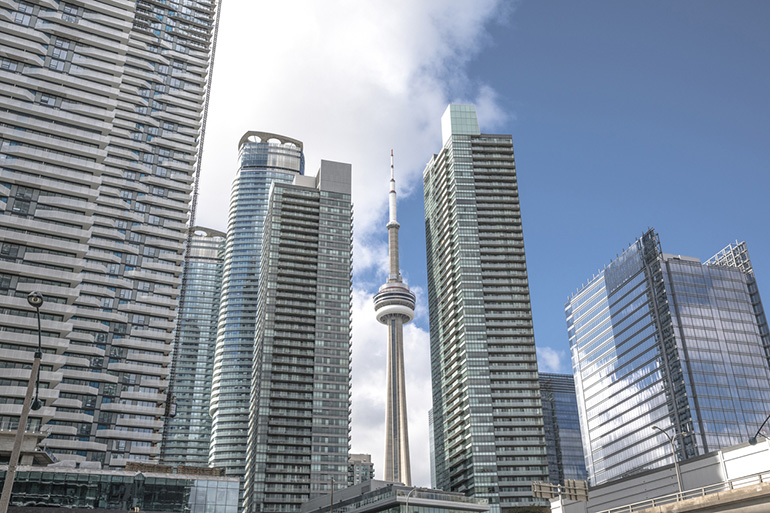How did this ever happen?
- Bruce Stratton
- Apr 4, 2024
- 4 min read
My son recently returned from Mexico City. His first words to me about the city were, “Dad, you would love the architecture of the city, incredibly diverse, modern, art deco, you name it. Incredibly vibrant! Why is downtown Toronto such a dump? So many glass condo buildings that all look the same." Inevitably whenever you are talking to anyone about downtown Toronto, the same comments come up unless it is perhaps an architect who designed one of the typical glass-clad condominiums. However, it is always the same question - How did this ever happen?
How it happened is not an easy question to answer. It no doubt stems from cultural priorities related to the desires and expectations of this generation of people from a young city like Toronto. Cities and civilizations like Mexico City and most of Europe have roots that are much older than any Canadian city. For example, start up dates include Rome (753 BC), Berlin (A.D. 1237), Paris (300 BC), Tokyo (A.D. 1200), Mexico City (A.D. 1325 - the oldest city in North America) and Toronto (A.D. 1834). Design and craft building standards in Europe’s major cities far exceed those of North America. There are expectations based on historic precedent that simply do not exist in Canada. On a recent trip to Germany, I witnessed masons meticulously laying small stone pavers along a town street sidewalk; this would never happen in North America. Architecture in downtown Toronto is all about economic feasibility, doing only what is necessary to meet the low expectations of the consumer. The public really has no understanding of what constitutes good or bad architecture. This is not to say that there is a lack of opinions of what they like or dislike.
It is hard to say whether there will be any changes in Toronto and Canada in general. Developers doing work in Toronto, whether they are building residential or commercial buildings, will only provide what the market demands. Over 40 years ago, when I was a somewhat younger architect, I met Paul Reichmann from Olympia and York Developments. I was doing research on “festival marketplaces”, which had their origins in Boston with Faneuil Hall and in Baltimore with Harborplace. I wanted to ask Mr. Reichmann his opinion on whether such a concept could work in Canadian cities such as Calgary. In the USA, downtown festival markets came about as a way to help revitalize downtown cores of cities where the middleclass had moved to the suburbs. Around the same time while I was living in Calgary where there were a few Olympia and York developments, I had visited one of their completed commercial high-rises in Portland, Oregon. That high-rise was far superior to the projects in Calgary. I asked Paul why that was the case. He looked at me and said “son...we only provide what the market demands.” Mr. Reichmann’s words spoken 40 years ago remain true today. If a highly creative new downtown condominium mysteriously appeared in Toronto, it would no doubt cost more to build than typical condominiums, at least one would think this. There would be a genuine and well-founded concern about whether there would be a market for the product. Ideally, as an experiment it would be interesting to see if you could design a highly creative and innovative condo tower with a construction budget on par with typical condo construction. Even if this did happen, there would be nervousness on the part of the developer that consumers may not be attracted to the design. It would, however, be a good experiment. If there are any municipal politicians who actually had an interest in downtown Toronto architecture and quality of life, they may support a type of joint venture project with the developer to reduce risk if market-priced condos were not selling due to the design. It would be worth a try.
As with most things in life, education is a key factor in bringing about change. Toronto residents and Canadians in general must become more curious and demanding when it comes to the design of the built environment. They must not accept yet another unimaginative glass-clad condo tower. International travel allows people to see what is being done elsewhere. Maybe people send too much of their holiday time going on cruises and all-inclusive resorts in Central America that have nothing to do with city building. An interesting thing going through architecture school is that you had to stand up and present your designs to various professors. There were always a barrage of questions you had to answer to defend your work. It kept you on your toes intellectually. It is too bad this practice does not exist in the real world when it comes to constructing another eyesore condominium. Perhaps there would not be so many of them.
There is part of me that thinks Toronto is past the point of no return in terms of bad architecture. I am by nature a positive person. Having said that, it just takes a few innovative projects to perhaps set a new standard. In my opinion, corporate commercial architecture in the Toronto downtown core, particularly some new recent works such as the TD Bank building on Front Street and the new Bank of Commerce building are interesting, technically sophisticated and designed to a high standard. There is hope, and to be fair, outside of the core in the distillery district there are some interesting condo developments. There just needs to be a lot more.





















Comments